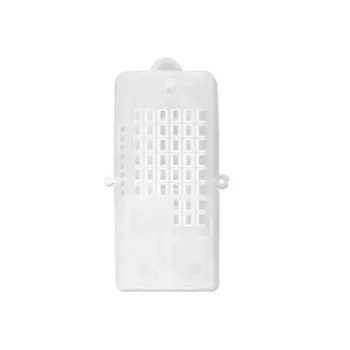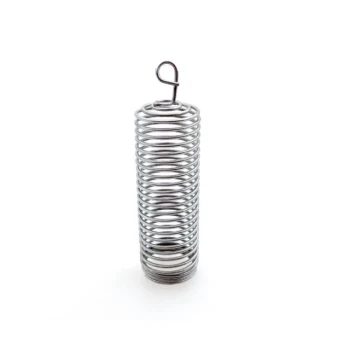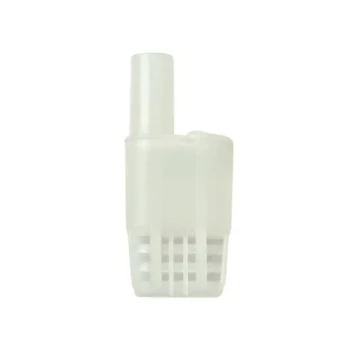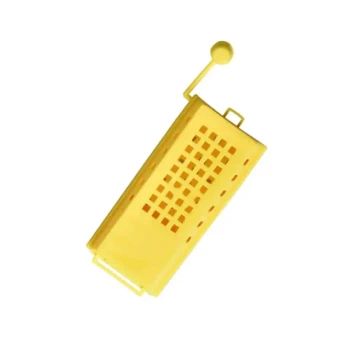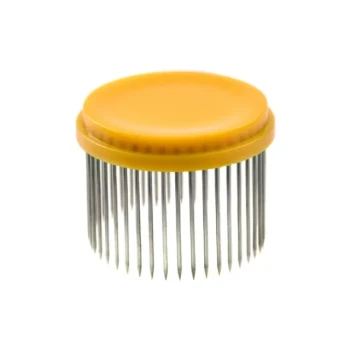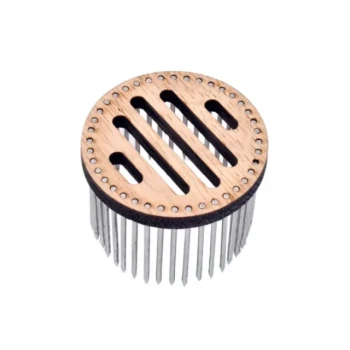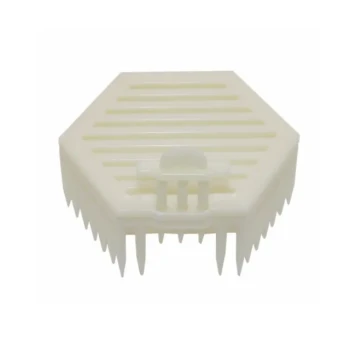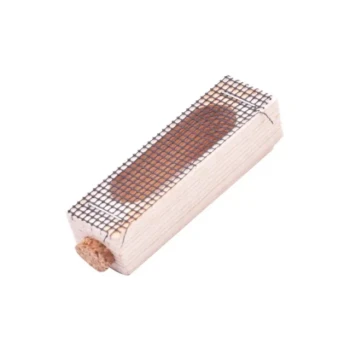On average, a bee colony takes two to seven days to fully adjust to and accept a new queen. This adjustment period is critical, as it relies on the colony slowly acclimating to her unique scent, or pheromones, while she is safely protected within an introduction cage.
The core of queen introduction is not about time, but about scent. The colony must forget the pheromones of their old queen and accept the new queen's scent as their own, a process that requires patience and careful observation.
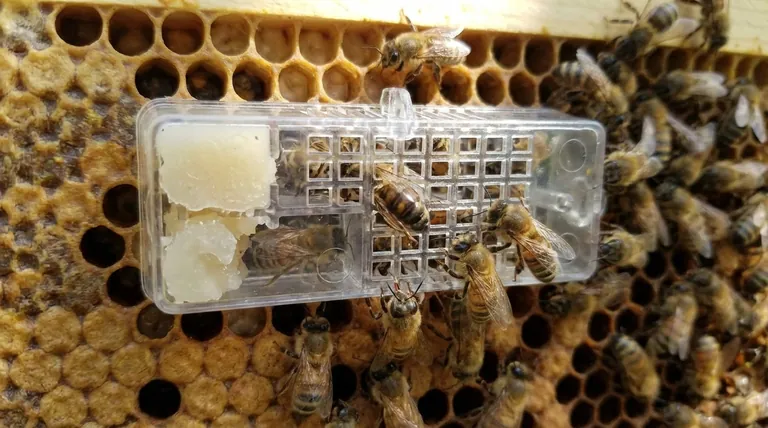
The Core Challenge: Overcoming the Scent Barrier
Introducing a new queen is one of the most delicate operations in beekeeping. The colony's identity and cohesion are entirely built around the scent of their queen.
Why the Colony Initially Rejects a New Queen
Every queen produces a unique blend of chemicals called Queen Mandibular Pheromones (QMP). This scent acts as the "fingerprint" of the colony.
An unfamiliar queen with a different scent is immediately identified as a dangerous invader, and the worker bees' first instinct is to attack and kill her.
The Role of the Introduction Cage
To prevent an immediate attack, new queens are introduced inside a small cage, often with a "candy plug" blocking one exit.
This cage serves two purposes: it physically protects the queen while allowing her scent to slowly spread throughout the hive via the screen mesh.
The Process of Pheromone Acclimation
Over several days, two things happen simultaneously. The pheromones of the previous queen dissipate, and the new queen's scent gradually becomes dominant.
The workers slowly become accustomed to this new scent, eventually recognizing it as the signal of a healthy, laying queen.
How to Identify Successful Acceptance
Your role as the beekeeper is to observe the colony's behavior toward the caged queen. This behavior is the most reliable indicator of acceptance.
Day 1-2: Initial Hostility
It is perfectly normal to see workers exhibiting aggression in the first 24-48 hours.
They may cluster tightly on the cage, attempting to bite and sting the new queen through the mesh. This is known as "balling" the queen cage.
Day 3-5: The Shift Toward Acceptance
The key sign of acceptance is a dramatic reduction in this aggression.
You will see workers calmly walking on the cage. Some may even be seen trying to feed the queen through the screen, a definitive sign that they have begun to accept her.
The Candy Plug Release
The candy plug is designed to be slowly eaten away by the worker bees. This serves as a natural, time-delayed release mechanism.
By the time the bees chew through the candy, her scent has typically permeated the hive, ensuring a safe and peaceful release.
Understanding the Risks and Complications
While the 2-7 day window is a reliable guideline, several factors can influence the timeline and success of the introduction.
The Risk of Premature Release
The most common mistake is releasing the queen too early. If you open the cage manually before the colony has fully accepted her scent, they will almost certainly kill her.
Always trust the bees' behavior, not the calendar.
Factors That Can Delay Acceptance
A hive that has been queenless for a long time can be more difficult to requeen, as the presence of laying workers can complicate acceptance.
Similarly, if the old queen was removed just moments before introducing the new one, her residual scent may still be strong, causing initial confusion and prolonged hostility.
What to Do if They Haven't Accepted Her
If you check on Day 3 or 4 and the workers are still aggressively balling the cage, do not release her.
Leave the cage in the hive for another 2-3 days and check their behavior again. Patience is paramount.
Making the Right Call for Your Hive
Observing the colony's reaction is more important than strictly adhering to a timeline. Let the bees tell you when they are ready.
- If your primary focus is a smooth introduction: Trust the candy plug and let the bees release her on their own schedule, but check after 3-4 days to ensure they are showing signs of acceptance and not aggression.
- If you observe continued aggression after Day 4: Leave the queen caged for a full 7 days. If hostility persists, there may be a deeper issue, such as a hidden virgin queen or laying workers.
- If your colony was aggressively queenless: Be extra patient. The social chaos in the hive needs more time to settle before a new monarch can be accepted.
Ultimately, successful queen introduction is a testament to the beekeeper's ability to observe patiently and act accordingly.
Summary Table:
| Key Stage | Timeline | Key Indicator |
|---|---|---|
| Initial Hostility | Day 1-2 | Bees 'ball' the cage aggressively. |
| Shift to Acceptance | Day 3-5 | Bees calm down, may try to feed the queen. |
| Full Acceptance | Day 5-7 | Queen is released safely; aggression ceases. |
Ensure a successful queen introduction with the right equipment from HONESTBEE.
Our high-quality queen introduction cages and beekeeping supplies are designed to protect your investment and give your colony the best chance for a smooth transition. Whether you're a commercial apiary or a distributor, we provide the reliable tools you need for effective hive management.
Contact HONESTBEE today to discuss your wholesale needs and equip your operation for success!
Visual Guide
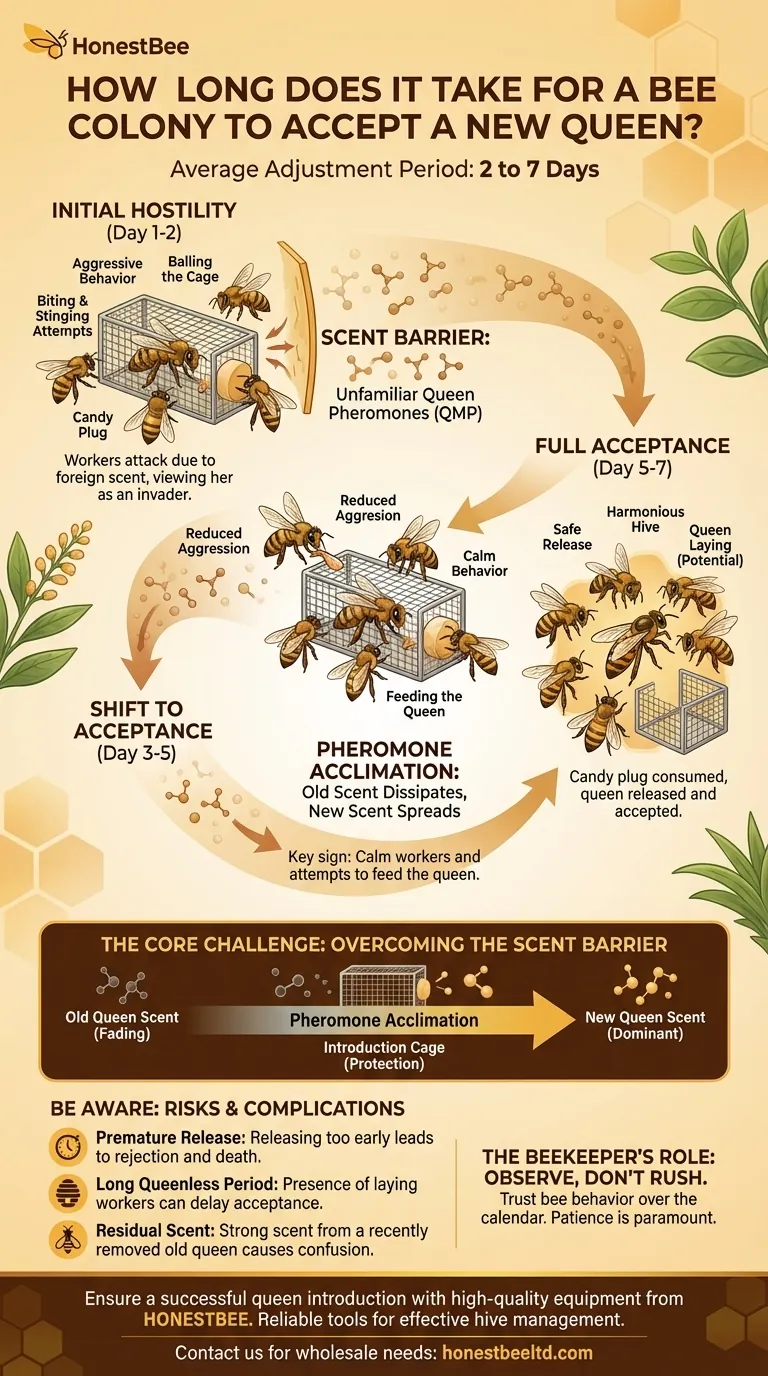
Related Products
- Professional Multi-Functional Queen Bee Cage
- Durable Galvanized Steel Spring Queen Bee Cage
- Multi-Function Queen Roller Cage and Catcher
- Professional Multi-Compartment Queen Cage with Sliding Lid
- Professional Queen Cage with Sliding Gate and Feeder Plug
People Also Ask
- How should a queen cage be maintained over time? Ensure Queen Introduction Success
- What are the components of a standard queen cage? A Guide to Safe Queen Introduction
- What is sequestration, and how does it help bees reorient? A Safer Guide to Hive Relocation
- What items are needed to place the queen bee's cage in the hive? A Guide to Successful Queen Introduction
- What should be done if bees damage the queen cage or harm the queen? Rescue Your Queen and Save Your Hive
